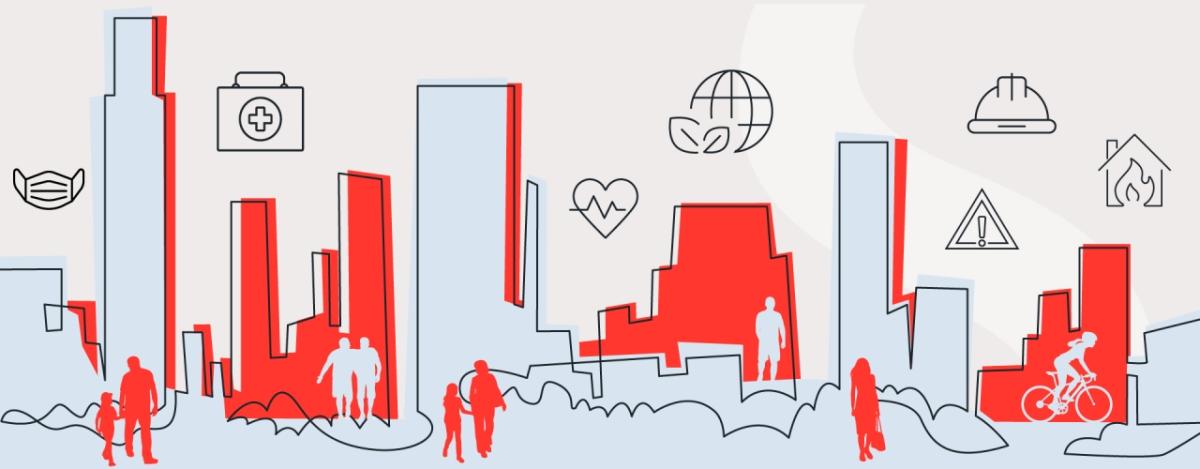A Battle for Every Day: Mindfulness Versus Complacency
Observance days are valuable in creating awareness, but day-to-day constancy is what feeds and sustains a culture that maintains the safest environment possible.

At specific times each year, many organizations take a “time-out” to recognize safety and health in their workforce and work environment.
In reality, health and safety has neither a timeline nor an agenda; it is relentless. Safety does not choose to take a break on these celebrated days. Incidents can happen 24 hours a day, seven days a week; there is no exception.
One such day is the United Nations’ World Day for Health & Safety at Work, observed on April 28. But it’s handled exactly the same as April 27, April 29, or any other work day on the calendar, as our people continue their commitment to operating safely, completing their Take 5, writing a Journey Management Plan, putting together an HSSE Plan, leading a tailgate or tool-box meeting, or having an office meeting and conducting a health and safety share.
While observance days are valuable in creating awareness, it is the day-to-day constancy that feeds and sustains a safety culture. But with consistency can also come complacency, and that is a daily battle for each of us. Ask yourself, “Where have I begun to become complacent? What can I do to change things up?”
The Morning Routine
In many cases we have a sense of security when we are in the workplace. Health and safety plans are in place, emergency response is understood, we are watchful of (and for) our colleagues.
Many of us do not consider that many accidents actually occur at home or during our commute. And it’s not just about accidents, but we must ask ourselves if we are attending to wellness at home.
Today, take a few minutes extra to enjoy breakfast with the family before everyone goes their own way. Look around the table and remember why we chose the “Work Safe, Home Safe” motto to remind our people of the importance of returning home safely each day.
Remind your family to take care, ask the kids to make sure they cross at the crosswalks, take it easy on their commutes to school, stand back from the platform at the station or away from the curb as they wait for the crosswalk light. Ask a family member or friend to join you as you check around the vehicles before pulling out—are the lights all working? Are the tires inflated? Are the windows clean and clear?
Each of those simple requests could prevent an injury … or even worse.
Traveling the Same Daily Route
On the commute to work, take stock of how safe this routine travel has become and where we may be cutting corners on acting safely. Have you continued to remain steadfast in not using a cell phone while driving? Do you need to drink that coffee while you drive?
Slow down for that yellow light instead of beating it. Watch for changing speed limits and remember they are in place to protect you and others. Don’t stress about delays, traffic, another driver, or the clock on the dash.
Each of these mindful thoughts can not only improve safety and head off potential injury or loss, but also ultimately remove stress and improve your general wellbeing.
Greetings and Salutations
One routine that seems to have become lost in today’s busy world is taking a human moment to connect with another person. Check-in with a colleague in the office, laboratory, or at the field/site location before you put pen to paper or start checking those emails; ask a colleague how their evening was and let them know you are interested.
Remember, if they have a worry to share, it will lighten the load for them and likely won’t increase the load for you. Be present and engaged, connect, have a laugh—this time can have as much value as getting your team prepped for their tailgate session.
A Day’s Work
Stay attuned to wellness throughout your day. As the day passes, look for opportunities to get up from your chair and away from the screen. Have a walk around the block; clear your mind; drink a glass or three of water; have a five-minute conversation with an office neighbor; eat your lunch with others, not at your desk.
As the day wanes be aware of fatigue and take steps to rejuvenate and refresh. A fatigued mind can make poor decisions and a fatigued body is more likely to have an accident.
Think about your commute home. If you are going to run late, make a call to let someone know before you leave rather than stressing about traffic or driving too fast.
Work Safe, Home Safe
In the end, we may not think we can prevent every potential incident, but remaining present, aware and looking to create the safest environment possible is our best chance to work safe and get home safe each day. Pause before each activity. Break down and consider the elements of routines just as much as you do for a new activity, with full attention to detail. And always remember to be aware of your surroundings.
You may be doing everything safely, but not everyone has been battling complacency with mindfulness the way you have!

